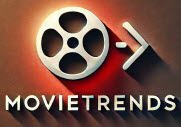New social network is the old newsletter
My favorite new social network doesn’t incessantly spam me with notifications. After using it, I don’t worry about ads following me around the web.
That’s because my new social network is an email newsletter. Every week or so, I blast it out to a few thousand people who have signed up to read my musings. Some of them email back, occasionally leading to a thoughtful conversation.
The newsletter is not a new phenomenon. But there is a growing interest among those who are disenchanted with social media in what the writer Craig Mod has called “the world’s oldest networked publishing platform.”
The shift toward newsletters is part of a broader change. For years, Mark Zuckerberg asked us to live in a more “open and connected” world. And billions of us did, posting status updates, photos and videos on social networks. Now, more of us are moving toward private modes of sharing.
A new crop of start-ups like Sub-
Getty Images
stack and Revue has emerged to cater to this desire to make direct connections with others online. They do it by making it easy to start a newsletter, offering dead-simple writing programs and insights into what’s getting read.
Media start-ups like The Skimm, a daily newsletter has grown from dozens of readers to millions. Other big media companies — Vox, BuzzFeed, CNN — have latched on to the trend as they seek a deeper bond with readers.
Direct connection creates a sense of loyalty between writer and reader. Establishing such a bond, Martijn de Kuijper, Revue’s chief executive said, increases the likelihood that people will read you what you have to say.
It can be more than just a creative endeavor: Newsletters can make a oneperson business. Writers can charge readers a monthly fee. Substack takes a cut of that fee; Revue charges writers using a tieredpricing system based on the size of the base.
Luke O’Neil, an independent writer, charges $6.66 (Rs
450) a month for a subscription to his newsletter. He has 4,000 subscribers, 700 of whom pay for his regular dispatches.
“I want to be myself, which is weird, angry and aggressively depressed,” O’Neil said. “It turns out, there are enough people out there who also like the same things as me.”






No comments:
Post a Comment